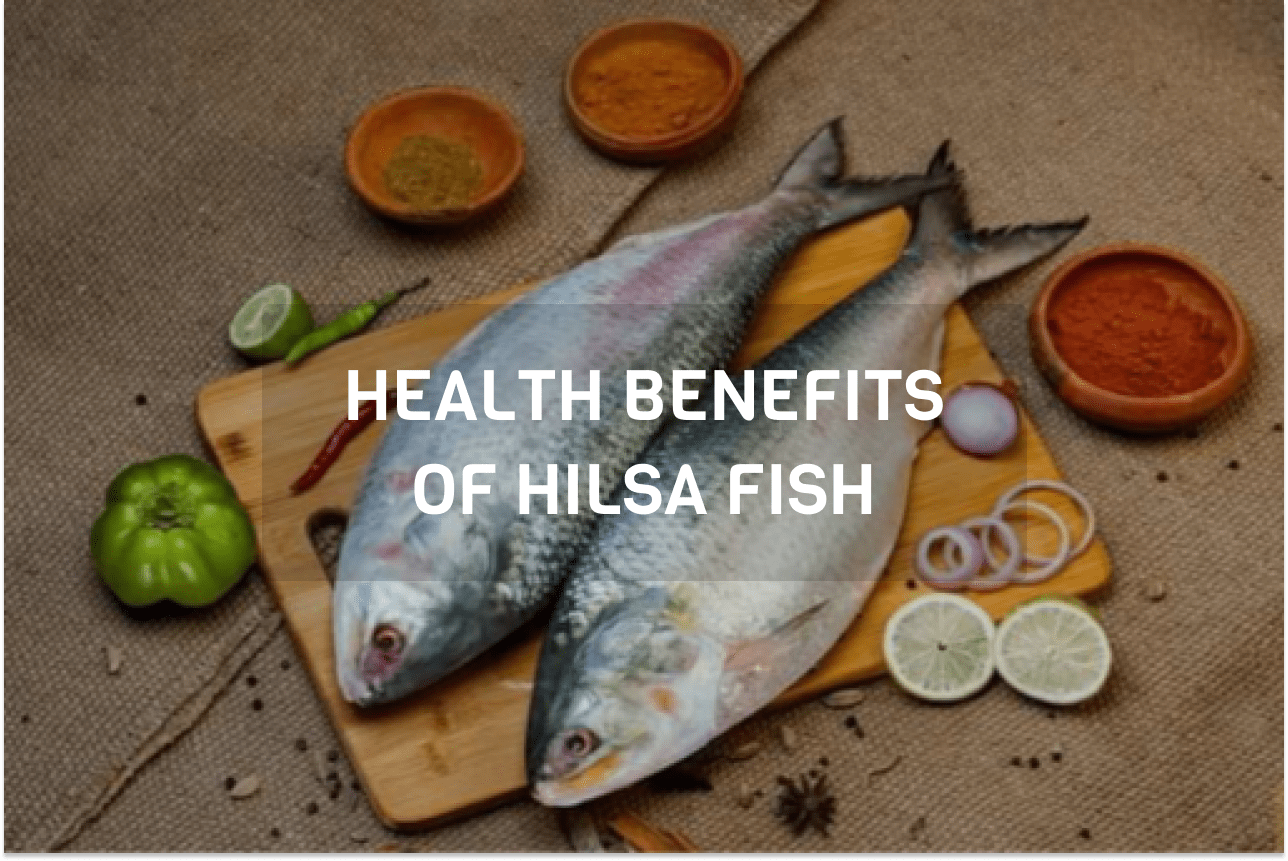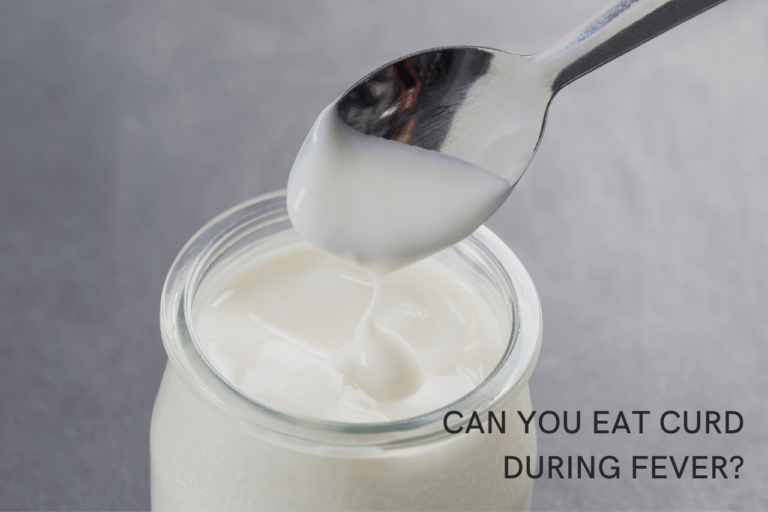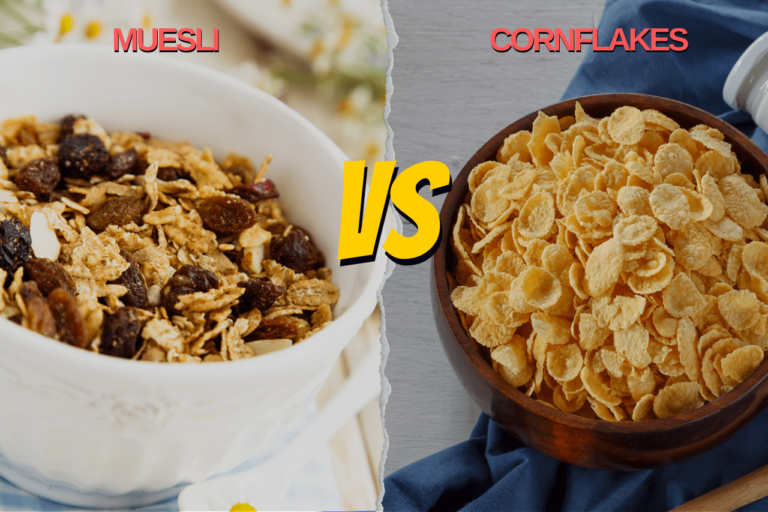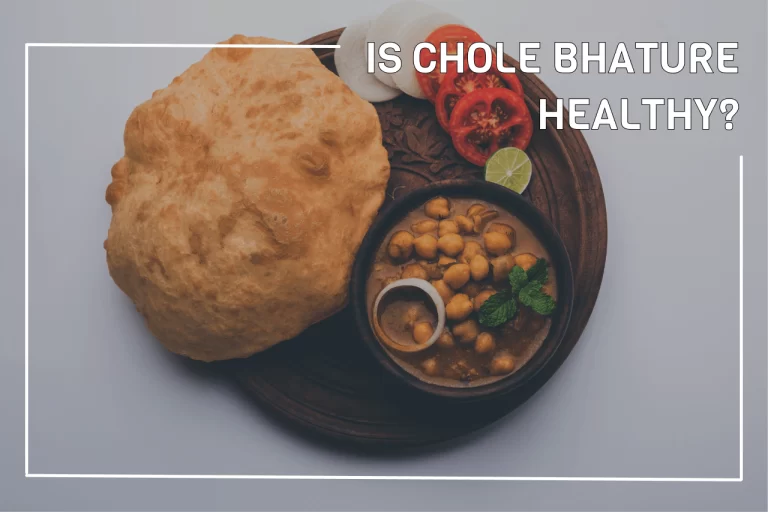Hilsa is one of the well-known and loved fish among people, especially in Bangladesh and India. It is considered one of the tastiest fish due to its unique soft, oily texture, mouthwatering taste with a superb mouthfeel like marshmallow, which is deemed delicious by many South Asian people.
It is known as the “queen of fishes” and is the national fish of Bangladesh and the state fish of West Bengal.
Hilsa fish is found in numerous countries throughout the world, such as India, Myanmar, Pakistan, Iran, Iraq, and Indonesia. Out of these countries, Bangladesh produces the most hilsa fish (about 80%). India comes in second for hilsa production.
It is known by many other names such as ilishi, jatka, saboor, hilsa herring, or hilsa shad.
Even though eaten by many people around the world, many people are unaware of the nutritional health benefits of hilsa fish.
Therefore, in this post, I have gathered a list of the 10 remarkable hilsa fish benefits that everyone should know.
Let’s start with the nutritional value of hilsa.
Also read: Top 10 Benefits Of Eating Catla Fish For Your Health
Nutritional value of Hilsa fish
Hilsa fish is an excellent source of amino acids, minerals, and lipids due to its many essential and polyunsaturated fatty acids (PUFAs). These PUFAs have been shown to reduce the risk of heart disease, diabetes, cancer, and obesity.
In addition, hilsa fish is a good source of vitamin B complex and minerals like calcium, phosphorous, iron, copper, selenium, zinc, and iodine.
Furthermore, hilsa fish is low in carbohydrates, and the fats it does contain are unsaturated, which is good for your health.
A 100-g serving of hilsa contains:
- Calories: 310
- Carbohydrates: 3.29g
- Sugar: 0g
- Fat: 22g
- Fiber: 0g
- Protein: 25g
- Calcium: 204mg
- Iron: 2.38mg
- Vitamin C: 27mg
10 Health Benefits of Hilsa Fish
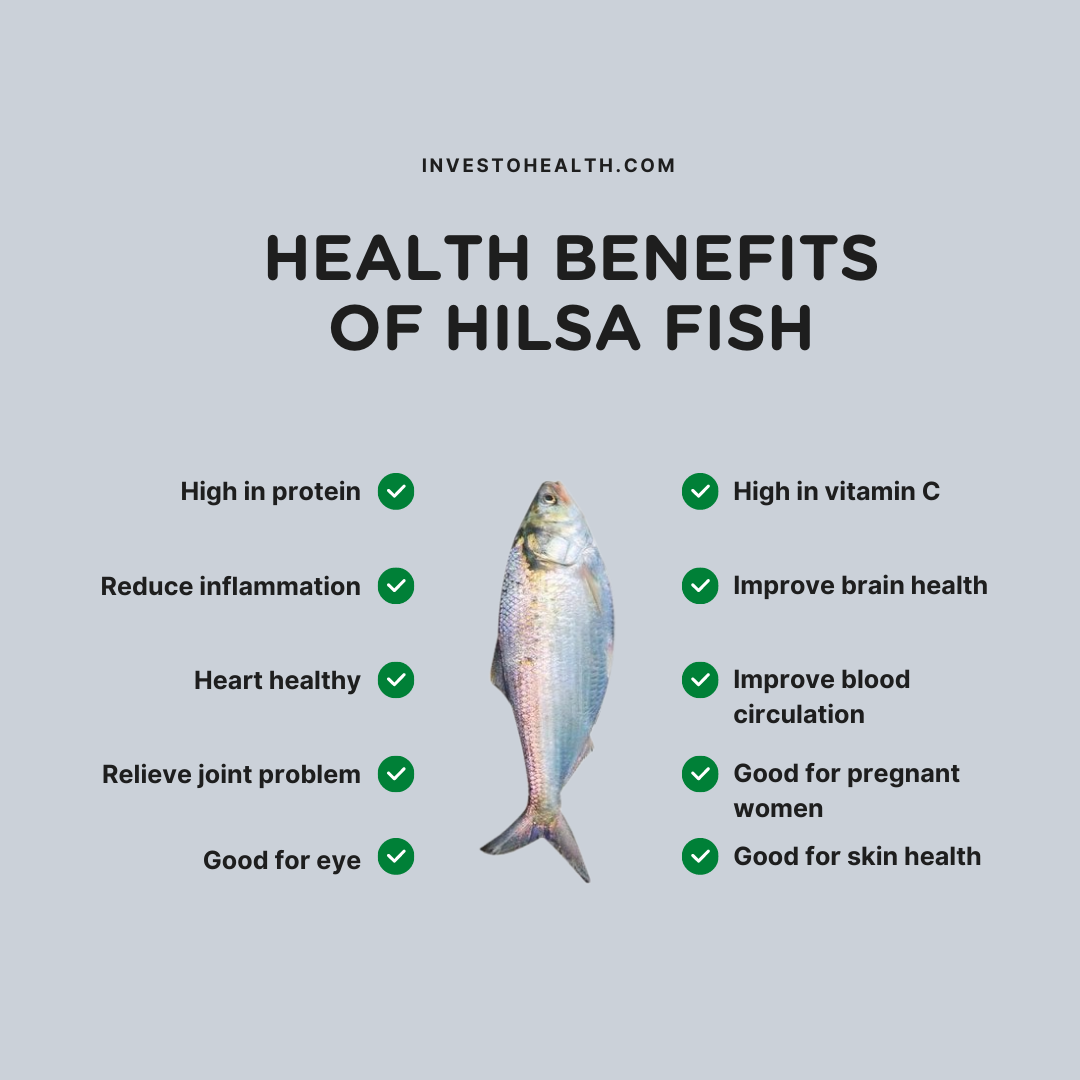
Excellent source of protein
Hilsa fish is an excellent source of protein containing all essential amino acids that bodies need. Amino acids are the building blocks of protein and they can be found in abundance in fish. The most prevalent amino acids in hilsa fish are histidine, glutamic acid, and aspartic acid.
If you are someone who is trying to build muscles or recovering from an injury, including Hilsa fish in your diet can be beneficial for you.
Reduces inflammation
Hilsa fish is an anti-inflammatory food that is packed with omega-3 fatty acids, which are beneficial for reducing inflammation.
Studies and clinical research have shown that omega-3 fatty acids have anti-inflammatory properties and, therefore, can be useful in the managing inflammatory and autoimmune diseases such as heart disease, cancer, diabetes, obesity, and arthritis.
Good for the heart
One of the most important health benefits of hilsa fish is that it is good for the heart.
This is because hilsa fish is a good source of omega-3 fatty acids, which are known to reduce the risk of cardiovascular diseases such as stroke and heart attack.
Studies have shown that people who consume more omega-3 fatty acids have a lower risk of cardiovascular disease and less arterial atherosclerosis.
In addition, a study done on hypercholesterolemic subjects found that people who ate 100g of hilsa fish per day for 10 months had a 14% reduction in overall cholesterol levels.
Also read: 10 Amazing Benefits of Rohu Fish for Your Health
Good for people with joint problems
Hilsa fish is a great source of protein and omega-3 fatty acids, both of which are essential for joint health. Omega-3 fatty acids help to reduce inflammation, while protein helps to repair and rebuild damaged tissue.
In addition, hilsa fish is also a good source of calcium and vitamin D, which are necessary for strong bones and joints.
Moreover, years of research have shown that people who eat at least 2 servings of fish a week have a lower disease activity in rheumatoid arthritis patients than those who don’t eat.
So if you suffer from weak joint or bone problems, make sure to include hilsa fish in your diet.
Improve eye vision
For years, it has been known that eating fish is great for improving your eye vision.
And it’s true – research has shown that fish oil, which is rich in omega-3 fatty acids, can help improve vision and prevent age-related diseases like macular degeneration (a common cause of blindness among older people).
Omega-3 fatty acids also have been shown to prevent and treat dry eye syndrome, where your eyes don’t produce enough tears or include itching, burning, and redness.
So, If you’re looking to improve your eyesight, start by incorporating fish in your diet that is high in omega-3s such as hilsa fish.
Beneficial during pregnancy
Being an excellent source of omega-3 fatty acids, hilsa fish is great for women during pregnancy. Studies have shown that consumption of Omega-3-rich foods during pregnancy is associated with improved neurodevelopmental outcomes in the child.
In addition, hilsa fish is an excellent source of vitamin B12, an important nutrient for pregnant women. This vitamin helps to form red blood cells, which carry oxygen to the baby, and also helps to prevent birth defects of the brain and spine.
Although eating fish has a high risk of mercury that can harm your body, eating an average amount (2-3 servings a week) hasn’t been shown to cause problems.
So go ahead and enjoy some fish during pregnancy! It’s good for you and your baby.
Enhance brain functioning
Whether it’s hilsa, catla, or any other fish all have been shown to improve brain functioning.
Thanks to omega-3 fatty acids which can improve brain health and help prevent cognitive decline. These fatty acids are essential for brain development and function, and they also help to protect the brain from damage.
In addition, hilsa fish is a great source of selenium, which has been linked to boosting learning and memory in aging brains.
So whether you are a growing child or an aging person, including hilsa fish in your diet can surely enhance your brain health.
Good source of vitamin C
Hilsa fish is a great source of vitamin C, providing more than 35% of the daily need. Vitamin C helps to perform a variety of important functions in your body such as fighting an infection, repairing damaged tissue, and boosting your immune system.
Moreover, vitamin C is not stored by the body, so it becomes important to include foods that are rich in vitamin C and hilsa fish is a great choice.
Good source of Iron
While you can get iron from various food sources, hilsa fish is an especially good source of this nutrient containing 26% of the daily value for men and 15% for women.
Including enough iron in your diet helps to regulate blood circulation and helps Iron deficiencies conditions like anemia.
Great for skin health
Being a good source of omega-3 and antioxidants like vitamin C, zinc, and selenium, makes hilsa fish a great food for your skin health.
The Omega-3 helps to hydrate your skin and protect it from irritants. It also suppresses the production of free radicals and protects your cells from oxidative stress.
While on the other hand zinc and selenium protect your skin from UV rays and are helpful in the treatment of psoriasis and exhibiting antimicrobial activity.
Is hilsa fish good for weight loss?
While fish isn’t magical food for your weight loss, including it in a well-balanced diet can help reduce your waistline.
Hilsa fish can be good for your weight loss due to many reasons such as:
- It is high in omega-3 which reduces inflammation and improves insulin metabolism, which further helps in weight loss.
- Hilsa fish is a good source of quality protein that helps to satisfy your hunger between meals.
- It contains vitamin B12 which in studies has been shown to improve metabolism and reduce cravings.
Are there any side effects of hilsa fish?
While there are many benefits of hilsa fish, there can also be some potential risks associated with eating it, especially when you eat too much of it.
These risks include:
- Hilsa fish is sometimes not recommended for pregnant or breastfeeding women, as it might have the possibility of containing high mercury levels.
- In addition to mercury, it may also contain harmful chemicals such as polychlorinated biphenyls (PCBs) and dioxins. These chemicals can cause health problems if they build up in the body over time.
- Eating hilsa can also cause allergic reactions in some people, however, this is very rare.
To avoid these risks, it is important that you eat only 2-3 servings of hilsa fish a week.
Final words
To sum up, hilsa is a great addition to anyone’s diet. It not only taste delicious and unique but also has many benefits for your health. However, it is important to limit your consumption to only a few servings a week.
So the next time you think of eating fish, make sure to try hilsa.
FAQs
The high demand for hilsa fish is one of the primary reasons behind its mounting cost. In addition, hilsa fish hilsa requires proper handling and adequate icing which result in increases in the prices in both domestic and international markets.
Hilsa fish is a great source of omega-3 which makes it great for heart patient. Eating just two servings a week can reduce many complications in heart patients.
Hilsa fish is high in protein and omega-3 which makes it great to include in a renal diet. Fish rich in omega-3 fatty acids can help lower triglyceride and blood pressure levels which is good for the kidney patients.
Hilsa fish is a great addition to diabetics diet as it has plenty of protein and omega-3 that can help to control their blood sugar levels, lose weight, and reduce their risk of developing heart disease. However, it’s important to limit intake to only couple of servings a week.
